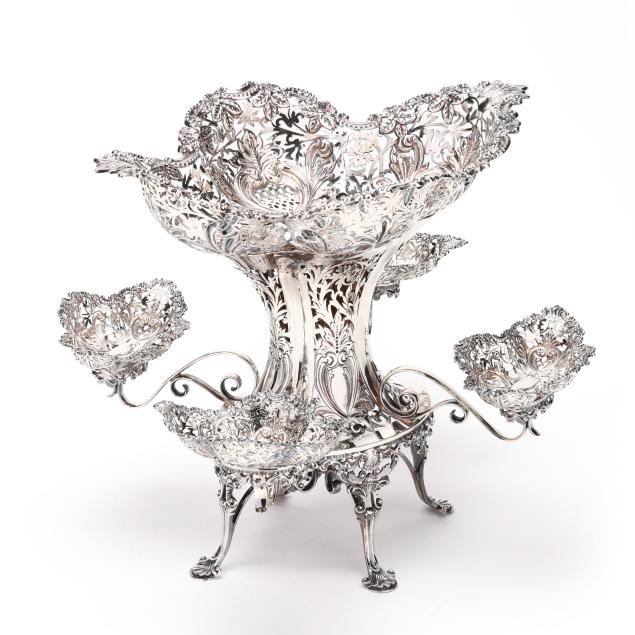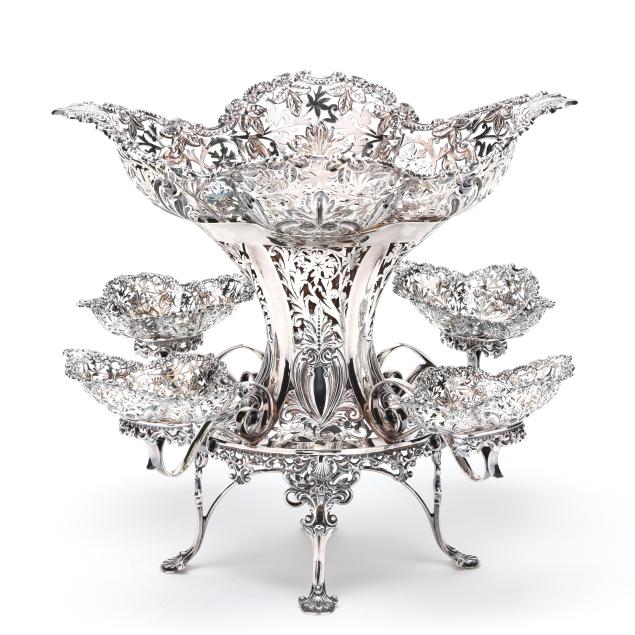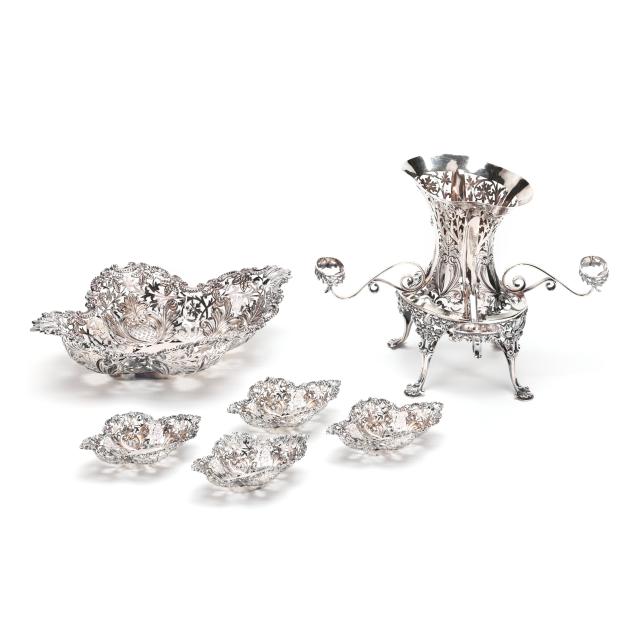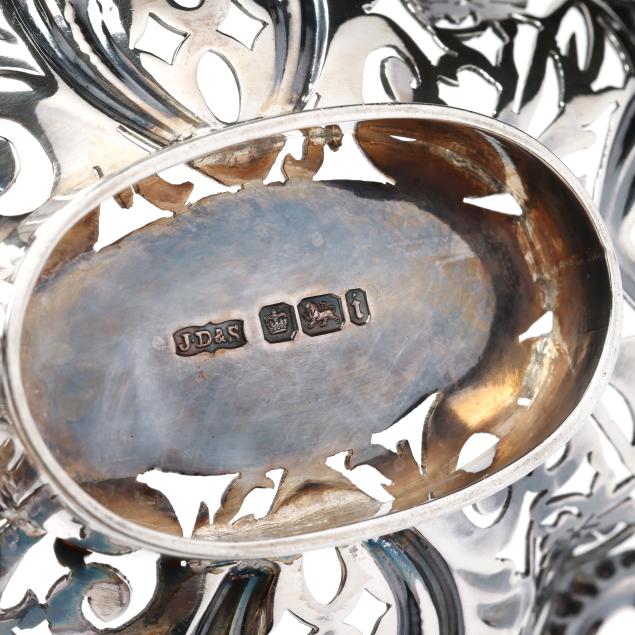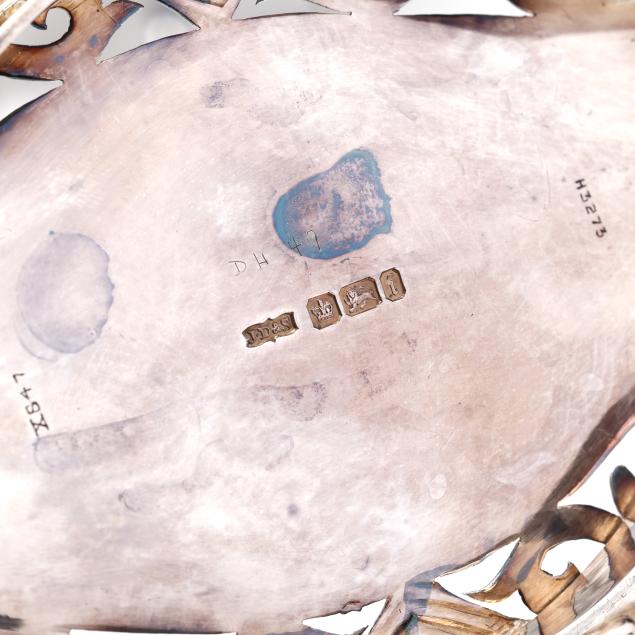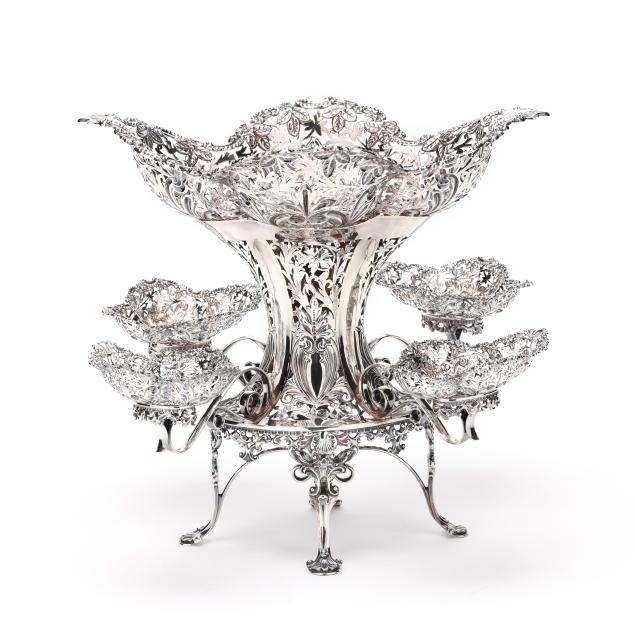
Lot 4077
Edwardian Silver Epergne, Mark of James Dixon & Sons
Explore more items like this one.
Visit our Silver Department Silver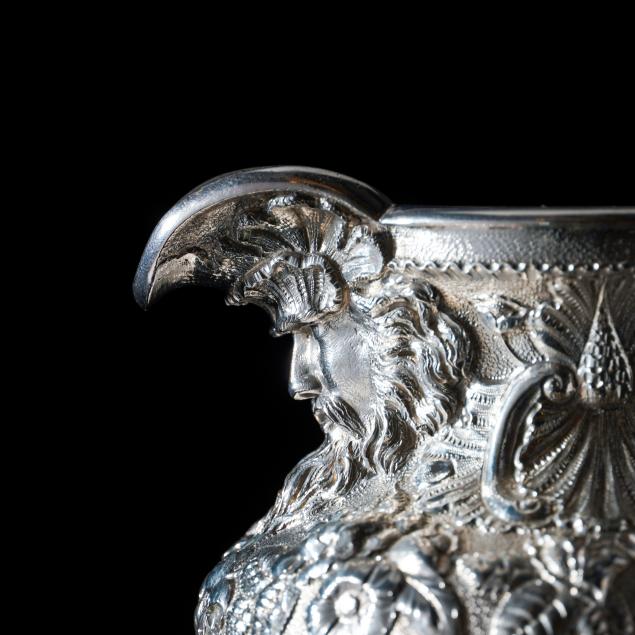
Lot Details & Additional Photographs
11 3/4 x 12 1/2 x 12 in.
51.2 troy oz.
Silver epergnes were among the most opulent and visually striking centerpieces in 18th- and 19th-century dining, symbolizing wealth, sophistication, and the artistry of silversmithing. Typically composed of a central bowl or dish supported by an elaborate framework with branching arms, epergnes held smaller dishes, baskets, or glass bowls intended for fruit, sweets, nuts, or flowers. Originating in the Georgian period and reaching their decorative height in the Victorian era, these objects often featured rococo or neoclassical ornamentation—scrolls, acanthus leaves, and repoussé floral designs were common. Crafted from sterling silver or silver plate, epergnes were not merely functional; they were theatrical, transforming the dining table into a stage for display and abundance. Their intricate design and versatility made them enduring symbols of ceremonial dining and refined taste.
Very good presentation with no visible flaws.
